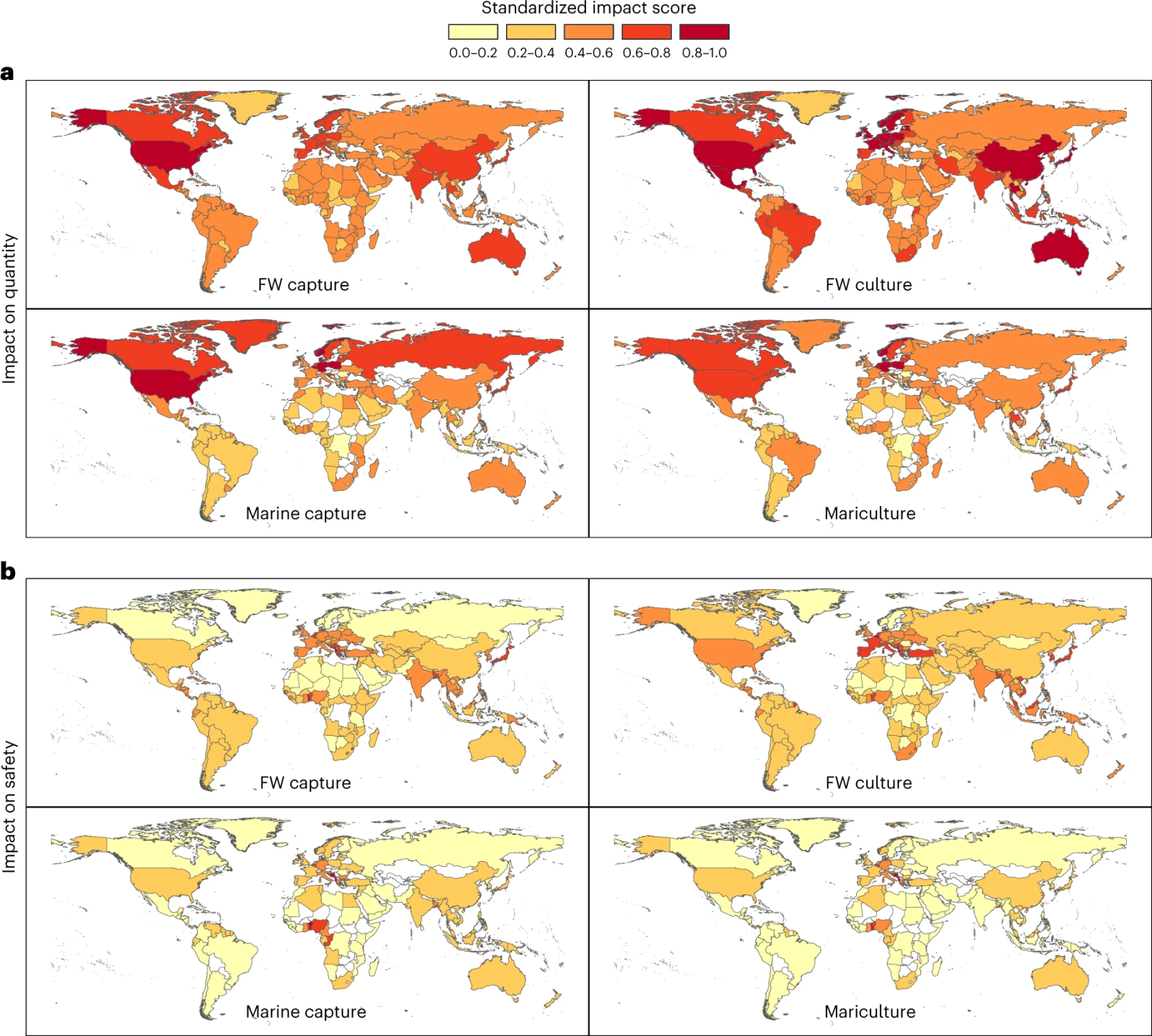June 26, 2023 | Nature Sustainability |
A diverse team of researchers from China, Sweden, the USA, Canada, and Chile embarked on a vital study focusing on the vulnerability of an often-overlooked resource: 'blue' foods, which include aquatic delicacies like fish and seafood. These foods are essential for more than 3.2 billion people worldwide, yet they face significant challenges in maintaining their supply amidst a changing environment while also meeting safety and sustainability standards.
In today's world, where human activities are profoundly impacting the planet, it's critical to understand how these changes affect the production of blue foods. Surprisingly, until now, not enough attention has been given to this important issue.
Here's what the researchers discovered:
- When we convert natural environments into fields for growing crops, we often end up losing a substantial portion of our blue food supply. The good news is that smart farming practices, like planting trees or using special carbon-rich materials, can help us recover some of these losses.
- In forests, the way we manage them can sometimes lead to a decrease in blue food production.
- What's interesting is that the indirect effects of climate change, such as wildfires, have a more significant impact on blue food production than the direct effects of rising temperatures.
This study reveals some sobering facts: more than 90% of global blue food production is at significant risk due to environmental changes. The countries that produce the most blue foods, like those in Asia and the United States, face the greatest threats.
Different types of blue food production are affected in various ways. For example, capturing fish from the ocean is often riskier than farming fish in freshwater environments. And some countries have more concerns about the safety of the food they produce than others.
The study also emphasizes the importance of helping developing countries in regions like Asia, Latin America, and Africa. In these areas, the risks are high, and the resources to respond to these challenges are limited. By understanding these risks better, we can create plans to protect our blue food supply and make sure it remains both safe and sustainable as our world changes.
In a nutshell, this study highlights the vulnerability of our 'blue' food supply in a world that's rapidly changing. It urges us to take action to safeguard this vital resource and ensure that it continues to feed billions of people while respecting our environment's health and sustainability.
Read more: Vulnerability of blue foods to human-induced environmental change

Fig. 3: Estimated impacts of anthropogenic stresses on global blue food production.
a, Impacts on quantity. b, Impacts on safety. Results were standardized and presented at the national level for each blue food production system. The four production systems included freshwater capture fisheries, freshwater aquaculture, marine capture fisheries and mariculture.





